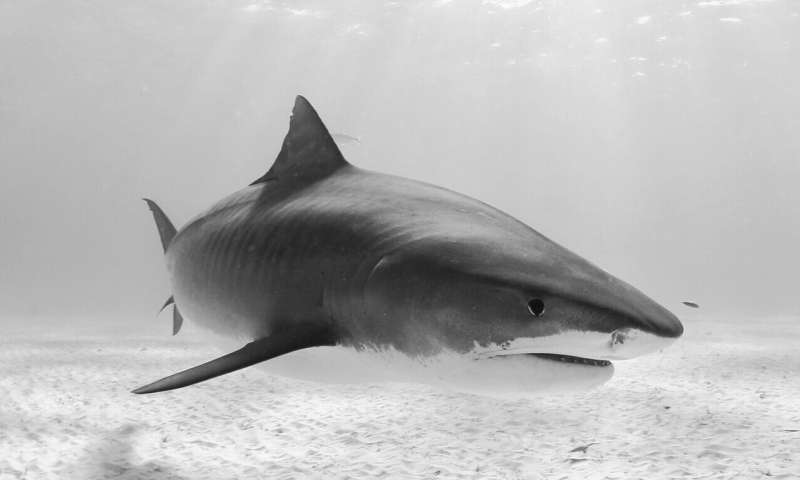Caribbean sharks in need of large marine protected areas

Governments must provide larger spatial protections in the Greater Caribbean for threatened, highly migratory species such as sharks, is the call from a diverse group of marine scientists including Stony Brook University School of Marine and Atmospheric Sciences (SoMAS) Ph.D. Candidate, Oliver Shipley, and led by the conservation NGO Beneath the Waves in a letter to published in Science.
With up to one-third of all open ocean shark species threatened extinction due to overfishing, conservation strategies that protect areas where sharks spent significant portions of their time are becoming increasingly important. In light of recent calls to protect 30 percent of our oceans by 2030, large marine protected areas, which can stretch from 100,000 sq. km to over 300,000 sq. km, have emerged as a popular management tool for their potential to enhance ecological processes and promote sustainable fisheries. One of the greatest benefits of these large conservation zones is their potential to conserve sharks, which travel long distances and can connect multiple jurisdictions over short time periods.
The letter in Science states that the Greater Caribbean, which boasts some of the highest rates of marine biodiversity and contains some of the most migratory shark species in the world, has been overlooked in these conversations.
"Through conducting years of scientific research on sharks in the Caribbean, I have witnessed first-hand, the benefits that marine protected areas can have for shark populations," said Shipley, a close collaborator of Dr. Austin Gallagher, Chief Scientist at Beneath the Waves. "We hope that currently protected nations, such as The Bahamas, can carry the torch and provide a foundation on which to base broader policy. For this to be a success, we will need to continue to build strong relationships and further understand the needs of key stakeholder groups throughout the wider Caribbean. We are extremely confident that this is going to happen."
"The diversity of countries sharing ocean space in the Greater Caribbean is remarkable, and we know that migratory shark species connect many of these countries along their migrations," said Gallagher. "Though there are many examples of establishing marine protected areas in the region, there are few that are big enough to encompass the space use of large sharks, such as tiger sharks which can move thousands of miles per year."
Recent research suggests that sharks are surprisingly rare in many Caribbean nations, likely due to decades of unregulated overharvest. However, certain areas such as the Bahamas, which have banned longline fishing and protected sharks in recent decades, have benefitted from the significant socioeconomic inputs generated from live sharks in the diving industry, estimated to be over US $140 million per year.Large marine parks can save sharks from overfishing threat
More information: Jennifer Sills et al, The Caribbean needs big marine protected areas, Science (2020). DOI: 10.1126/science.abb0650
Journal information: Science
No comments:
Post a Comment